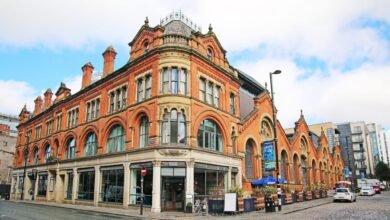Skid Row – The Homeless Capital of the World

If you’re interested in learning about Downtown Los Angeles’s homeless community, you’ll want to know about Skid Row. This neighborhood is officially known as Central City East. It’s a great place to explore the many issues that the area faces, including homelessness, drug addiction, and gentrification. The article below will give you some background on the area and the issues surrounding it, including the effectiveness of harm reduction programs in the area.
Homelessness
Los Angeles City Hall sits just three blocks from Skid Row, where drug addicts are sheltered on the front lawn. Signs outside warn of an upcoming cleanup. The California Division of Occupational Safety and Health fined City Hall East administration for creating unsafe conditions. A rat infestation resulted in the hospitalization of a deputy city attorney. Though Los Angeles Mayor Eric Garcetti says homelessness is primarily a housing issue, it is important to understand that many people experience homelessness as a result of a variety of circumstances.
In the late nineteenth century, migrant laborers began arriving in Los Angeles via railroad. The Skid Row area was once dominated by tenement houses and cheap apartments, and residential motels. After the railroads left, the unhoused inhabited undeveloped land. These unhoused individuals were deemed a threat to the public welfare and middle-class homes. Many were jailed for vagrancy.
Characteristics of the area
Although Skid Row has been around for almost a century, it only became a sprawling city in the 1970s. It now covers about four square miles, extending from 3rd Street on the north to 7th Street on the south and Alameda to the east. Today, this area is considered the homeless capital of the world, with hundreds of thousands of unhoused residents making the trek each year.
The city of Los Angeles began a program to redevelop the area in 1960, removing old, deteriorating buildings and presenting it to property owners as an economic measure. The city spent over $5 million a year on providing social services to those living on Skid Row, and they hoped to recoup their losses through the sale of these vacant properties. But, the program also involved aggressive enforcement of city ordinances prohibiting the camping of vehicles on Skid Row. As a result, homeless residents were cited and their possessions confiscated by police.
Impact of gentrification on the area
While DTLA2040 would not spur market-rate developers to build new housing in Skid Row, it could speed up the slow change that has been taking place. As buildings are refurbished and new developments pop up, Skid Row continues to shrink block by block. But in order to make the change more equitable and sustainable, city planners must ensure the new developments will create a mixed-income community.
A 50-block area within downtown Los Angeles hasn’t seen much market-rate development in the current cycle, but the city’s rezoning plans would allow a small amount of market-rate development around the perimeter of the area. Skid Row has historically been a hub of social service organizations and affordable housing, and is a magnet for homeless people from throughout Southern California. Social service organizations, however, worry that the new zoning plan will harm the community’s current residents.
Effectiveness of harm reduction programs on skid row
While some critics argue that harm reduction programs are not effective, these advocates point out a number of positive outcomes. In San Francisco and Los Angeles, for example, the number of fatal overdoses is down as a result of these programs. Methamphetamines are dangerous because of their high amounts of dopamine, which can cause psychosis or violent behavior. A recent study suggests that harm reduction programs in these communities have saved hundreds of lives every year.
The Safer Cities Initiative was a major step toward reducing crime on Skid Row. During its initial phase, it reduced the number of homeless residents from approximately 1,876 to 700. However, the program was abandoned soon after. It’s estimated that the number of homeless people in Skid Row is now around 2,500. The program has proven effective, reducing crime and resolving drug addiction in the area.







